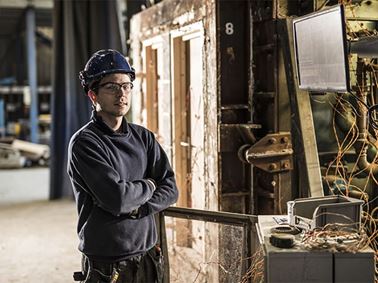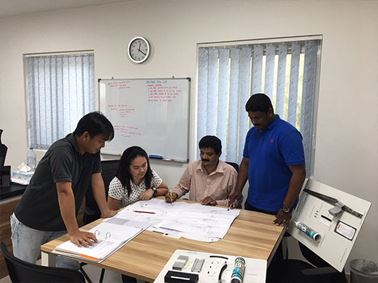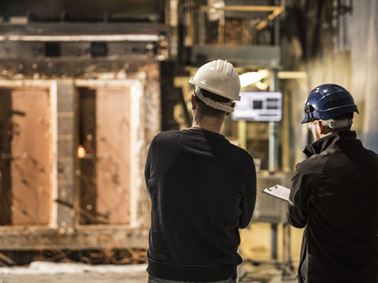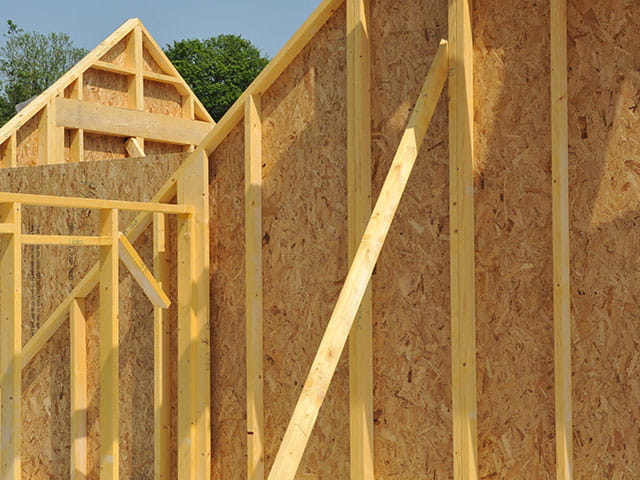Timber Panel Product testing
Timber panel products need to be tested for both reaction to fire and fire resistance. Warringtonfire can test to required standards, helping your product demonstrate fire resistance and establish how it will behave in a real-life fire event.
Why do I need to test my timber panel products?
Reaction to fire testing assesses how a product reacts in the early stages of a fire and looks at combustibility, flame spread, smoke production and whether flaming droplets are produced. However, once a fire is fully developed, the fire resistance of a timber panel product becomes significant; it is at this point that a timber panel product needs to withstand fire for a specific period to maintain structural integrity and allow for evacuation.
What testing will my timber panel products require?
The fire tests your timber panel products are required to undergo will depend on where the end product will be used. For example, if it is intended for use in an escape route, it will need to demonstrate a higher level of fire resistance and meet stricter reaction to fire requirements than that in an area that is not used readily.
Warringtonfire can test to the following reaction to fire standards:
Single Burning Item test (SBI) to BS EN 13823
This test provides data on the timber panel’s heat release, surface spread of flame properties and smoke production when exposed to a thermal attack by a sandbox burner supplied with propane. The burner represents a wastepaper basket or small chair fire and has a heat release rate of 30kW.
Heat release is a measure of the contribution that a burning material makes to a fire in progress; for example, a high heat release rate will produce a high rate of temperature increase in surrounding un-burnt material and accelerate fire spread.
Heat release and smoke production rates are measured instrumentally throughout the test; they are obtained by airflow drawing the effluent passes through the duct. The smoke density is calculated by obscuration of a white light beam, and the heat release is measured by gas analysis (oxygen depletion method).
Non-combustibility test to BS EN ISO 1182
This standard provides a method to determine if a product can be classified as non-combustible. This non-combustibility test is generally conducted in order to satisfy UK Building Regulations.
There are several criteria the product must meet in order to be classified as non-combustible:
- Temperature rise (furnace and centre of the specimen) should be ≤ 50°C
- Period of sustained flaming should be ≤ 10 seconds
Heat of combustion test to BS EN ISO 1716
This standard provides a method to measure the gross heat of combustion from the timber panel using a bomb calorimeter. Initially, the timber panel specimen must be prepared; generally, this is done by simply cutting the material into small pieces or grinding it up. Approximately 0.7g of the prepared sample (measured to 4dp) is placed inside the crucible, and 0.3g of paraffin oil is added (again measured to 4dp). The filled crucible is placed inside the bomb, and ignition wire is fitted to the two pins. The bomb is then sealed, filled with oxygen and then put into 2000g of water. Once the conditions have stabilised, the electric circuit is created, and the bomb is fired.
The gross heat of combustion is calculated by measuring the temperature rise of the water surrounding the bomb (taking into account the weight measurements taken before the test).
Single- flame source test (SFI) to BS EN ISO 11925-2
This test method determines the ignitability of a timber panel composite or assembly when subjected to direct impingement of flames. It is not designed to assess any other fire parameter (e.g. flame spread). The possibility of the material, composite or assembly causing secondary ignition of different materials is also considered by observing burning droplets or debris that may be formed.
The timber panel is mounted vertically into the test frame, and two pieces of filter paper are placed below the specimen. The defined test flame may be applied in several ways, dependent upon the requirements of the specification. The application may be as follows:
- 15 seconds surface application
- 15 seconds edge application
- 30 seconds surface application
- 30 seconds edge application
The test duration is as follows:
- 15 second flame application time, total test duration = 20 seconds
- 30 second flame application time, entire test duration = 60 seconds
In all cases, observations are made as to whether the flame tip reaches a point 150mm above the original flame application point within the test duration and whether the filter paper was ignited by any flaming debris/droplets, etc.
Generally, six specimens are tested with each flame application type required.
Sixteen specimens, each measuring 250mm x 90mm x end-use thickness (though not exceeding 60mm), are required for the test. Eight samples must be cut in the direction of production, and four specimens must be cut at 90° to the direction of production.
Fire resistance testing for timber panel products
As timber products need to withstand the effects of fire and ensure they don’t contribute to the spread of flame and smoke, it is crucial to get your timber panel products tested for fire resistance. Warringtonfire can test your timber panel products to all relevant fire resistance tests under the BS 476 family of standards as well as to BS EN 1363-1, BS EN 1364-1 and BS EN 1364-2 for walls and ceilings, BS EN 1365-1 and BS EN 1365-2 for walls, floors and roofs, BS EN 1634-1 for doors and building hardware.
What are timber panel products?
Timber panel products are wood-based sheet materials that are used in construction. Within each of the different type of timber panel products, there are several categories, types and grades. Each product has to meet different standards in order to be fit for its purpose.
Timber panel products – what do the building regulations say?
The guidance in each country can differ slightly, but ultimately, timber panel products are generally seen as having a structural element. Therefore, timber panel products must maintain their loadbearing capability for a determined period and resist the passage of fire or excessive heat. This is to ensure structural stability and the containment of the fire and perhaps toxic fumes (depending on the product or use) until the suppression of the fire or evacuation has been completed. When testing timber panel products, it is vital to test the hardware used in the final construction, as certain types of metals or plastics could change the predictability of the results. Therefore, it is also essential that the products are installed correctly and as tested; otherwise, the real-world scenario may differ from expectations. Find out more about how Warringtonfire can help you with the third-party certification of products and personnel.
To find out how Warringtonfire can help you with your timber panel product testing, contact our laboratory below.
Our Services
SERVICES

Fire Resistance
Find out how we test our customers passive fire protection products, to meet British, European and International standards in support of both CE marking and other third-party certification programs.

Fire Engineering
Find out more about how we can offer a range of fire inspection and engineering to complement our other services.

Certification
Find out how about our a range of fire and non-fire third party certification to complement our other services.
